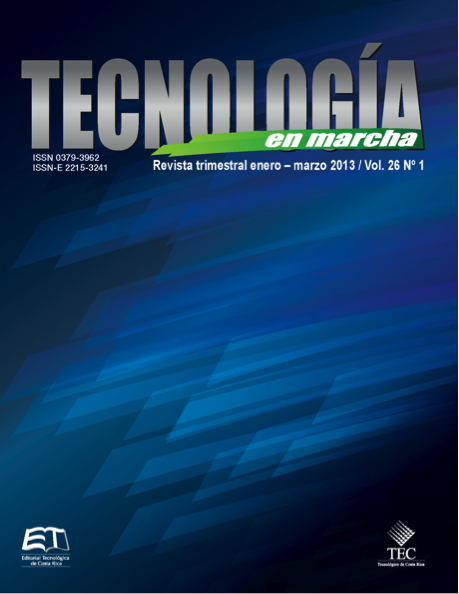Land use capacity in the mini watershed El Limón, Sabana Yegua Watershed Complex, Dominican Republic
Main Article Content
Abstract
This study conduced the biophysical analysis of El Limón micro watershed within the high land Sabana Yegua watershed, Dominican Republic. The objective of the research was directed to determine its land capacity use, taking into account limitations of soils, climate and geomorphology. It proposes a series of management practices as options to reduce erosion, improve soil and roads conditions, in order to get better conditions for a rational system management. In this way, for reaching such objective for the first time some basic elements could be established and integrated to deal with the accelerated degradation problem affecting the area under study. For getting this purpose fundamental parameters were established, such as factors related to erosion, soil, drainage and climate, in function of the methodology MAG/ FAO/UNED (1996) used in Costa Rica to determine land capacity use, which has been adapted to the area under study. This methodology has been used as the basic tool in this essay, integrating land classes from class I to class VIII in acordance with the frecuency and level limitations identified. For its application in the Limón micro watershed, we included other physical parameters that were not observed in this methodology, such as soil apparent density and the climatic parameters, such as rain and temperature daily registers, the last two in order to determine the life zone.
The research established that the land classes in El Limón micro watershed include land from class III to VIII. All land classes are able for protection, forestry systems and agroforestry. In the same manner, it could be established that major limitations are related to erosion and soil drainage. For making corrections to these limitations, the recommended practices are minimal tillage, crops rotation, and use of dead barriers with harvest residuos, live barriers with natural biological products of the zone and individual terraces in agroforestry systems. These practices allow producers to develop their traditional system production with a technical criteria management.
Article Details
Los autores conservan los derechos de autor y ceden a la revista el derecho de la primera publicación y pueda editarlo, reproducirlo, distribuirlo, exhibirlo y comunicarlo en el país y en el extranjero mediante medios impresos y electrónicos. Asimismo, asumen el compromiso sobre cualquier litigio o reclamación relacionada con derechos de propiedad intelectual, exonerando de responsabilidad a la Editorial Tecnológica de Costa Rica. Además, se establece que los autores pueden realizar otros acuerdos contractuales independientes y adicionales para la distribución no exclusiva de la versión del artículo publicado en esta revista (p. ej., incluirlo en un repositorio institucional o publicarlo en un libro) siempre que indiquen claramente que el trabajo se publicó por primera vez en esta revista.

